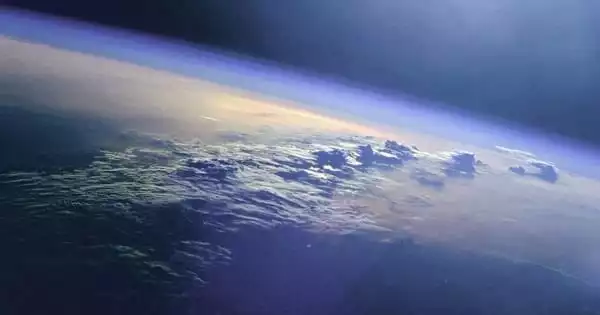Today, oxygen makes up around one-fifth of the volume of the Earth’s atmosphere and is essential to life as we know it. However, this was not always the case. Although oxygen has always existed in compounds in the Earth’s interior, atmosphere, and seas, it did not begin to collect in the atmosphere as oxygen gas (O2) until much later in the planet’s history.
Earth formed from cosmic debris a little more than 4.5 billion years ago. Liquid seas existed on the world nearly from the beginning, but they were very certainly vaporized by the giant meteors that clobbered the planet on a regular basis throughout its first 700 million years of life. By 3.8 billion years ago, when the first rocks produced under water appeared in the geologic record, everything had settled down.
When did the Earth’s oxygen levels reach a level suitable to support animal life? McGill University researchers discovered that an increase in oxygen levels occurred in tandem with the evolution and growth of complex, eukaryotic ecosystems. Their findings provide the most compelling evidence to date that extremely low oxygen levels stifled evolution for billions of years.
“There remained a fundamental vacuum in our understanding of environmental forces in early evolution until today. The early Earth was characterized by low amounts of oxygen, which increased until surface oxygen levels were sufficient for animal life. However, estimations for when this rise occurred differed by over a billion years – maybe even before mammals existed “says Maxwell Lechte, a postdoctoral researcher at McGill University in the Department of Earth and Planetary Sciences under the direction of Galen Halverson.
Because ozone absorbs ultraviolet light strongly, it can be detected even at low atmospheric oxygen levels. This study emphasizes the importance of UV detection in space-based observatories in increasing our chances of discovering likely evidence of life on planets outside our solar system.
Noah Planavsky
Ironstones provide insights into early life
To find answers, the researchers investigated iron-rich sedimentary rocks deposited in ancient coastal habitats from around the world. The researchers were able to estimate the amount of oxygen present when the rocks originated, as well as the influence it would have had on early life such as eukaryotic bacteria – the progenitors to contemporary animals – by evaluating the chemistry of the iron in these rocks.
“These ironstones provide information about the oxygen levels in shallow marine areas where life was developing. The ancient ironstone record reveals that oxygen levels were less than 1% of what they are today, which would have had a huge influence on ecological commutation “Lexity,” says Changle Wang, a Chinese Academy of Sciences researcher who co-led the study with Lechte.

“These low oxygen circumstances continued until around 800 million years ago, when we first detect evidence of the emergence of complex ecosystems in the rock record. If sophisticated eukaryotes existed before that time, their habitats would have been hampered by low oxygen levels” Lechte explains.
Earth is still the only known site in the universe where life may be found. The Earth’s atmosphere and oceans are now abundant in oxygen, but this was not always the case. Photosynthesis, a process utilized by plants and other creatures to turn light into energy, resulted in the oxygenation of the Earth’s oceans and atmosphere, releasing oxygen into the atmosphere and generating the required conditions for breathing and animal life.
Searching for signs of life beyond our solar system
The new findings show that the Earth’s atmosphere was capable of maintaining low amounts of atmospheric oxygen for billions of years, according to the researchers. This has significant consequences for the search for signs of life outside our solar system, because looking for remnants of atmospheric oxygen is one method of looking for evidence of past or present life on another planet – or what scientists call a biosignature.
Scientists utilize Earth’s past to determine the oxygen levels required for terrestrial planets to stabilize. According to the researchers, if terrestrial planets can stabilize at low atmospheric oxygen levels, the greatest opportunity for oxygen detection will be to look for its photochemical consequence ozone.
“Because ozone absorbs ultraviolet light strongly, it can be detected even at low atmospheric oxygen levels. This study emphasizes the importance of UV detection in space-based observatories in increasing our chances of discovering likely evidence of life on planets outside our solar system” Noah Planavsky, a biogeochemist at Yale University, agrees.
According to the researchers, more geochemical analyses of rocks from this time period will allow scientists to create a clearer picture of the history of oxygen levels throughout this time period and better understand the feedbacks on the global oxygen cycle.





